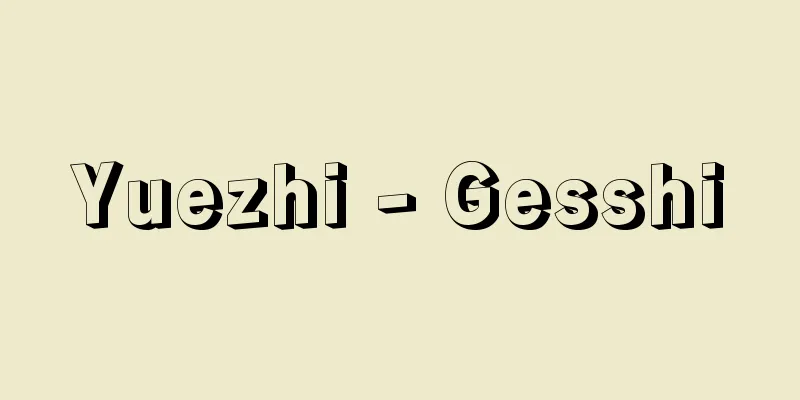Shosoin documents

|
These are ancient documents from the 8th century Todaiji Temple Office of Sutra Copying, which were preserved in the Azekura storehouse of Todaiji Temple's Shosoin. This office developed from the office of the Empress's Court, which began operations around 736 (Tenpyo 8). The majority of the documents and ledgers are related to the frequent sutra copying projects carried out up until the Hoki era (770-780), such as the May 1st Sutra (Empress Komyo's Sutra), which contains a prayer dated May 1, Tempyo 12. At the time, waste paper was often used for office work to conserve paper, and so the documents and accounts of the sutra copying office were made on a variety of papers, including family registries sold off by the government (from Mino, Chikuzen, Buzen, and Bungo provinces in 702, and Shimousa province in 721), tax ledgers (from Yamashiro province during the Tenpyo period (729-749) and other official documents), as well as construction documents for Hokkeji Temple, Kofuku-ji Temple, Ishiyama-dera Temple, and other temples. These remain as documents with the backs of paper (primary documents). The Shosoin documents provide concrete historical materials on local administration, families, architecture, handicrafts, distribution economy, and social life in the 8th century that cannot be found in official histories or legal codes. The Shosoin documents were first organized and made known to the public during the repair work carried out between 1833 and 1836 (Tenpo 4-7). At that time, Hoida Tadatomo extracted documents and handwriting from the two government offices and eight ministries and organized them into 45 volumes of Seishu. The remaining documents were then organized into 50 volumes of Zokushu, 43 volumes of Zokushu Goshu, 50 volumes of Zokushu Betsushu, two volumes of 440 volumes of Zokushushu, and three volumes of 39 volumes of Jinkai, totaling 667 volumes and five volumes, between 1875 and 1904 (Meiji 8-37). The total number of documents is said to be about 10,000. Most of them have been reprinted in the Dai Nihon Komonjo and are used for research. Other treasures that have been preserved in Shosoin include books of offerings, accounts of treasures from the early Heian period, and Nizutsumi documents (paper used to wrap cinnabar), as well as many written documents such as manorial drawings from the 8th century and ink-written inscriptions on various utensils. Additionally, 112 volumes of Tonan'in documents (including many manorial documents from the 8th century) were transferred from the Todaiji Temple Seal Collection in the early Meiji period and are stored in Shosoin. [Eiichi Ishigami] "Nairaku Ibun," edited by Takeuchi Rizo, 3 volumes (1963, Tokyodo Publishing)" ▽ "Shosoin Office, edited by, Shosoin Paper (1970, Nihon Keizai Shimbun) " ▽ "Shosoin Office, edited by, Shosoin Calligraphy (1964, Nihon Keizai Shimbun)" ▽ "Matsushima Junsei, edited by, Shosoin Calligraphy" (Japanese Art 105, 1975, Shibundo)" ▽ "Tsuchida Naochin, "On the Shosoin Documents" (Collected in Bulletin of the Kokugakuin University Institute for Japanese Culture Research, 41, 1978, Kokugakuin University Institute for Japanese Culture Research)" ▽ "Minagawa Kanichi, "On the Shosoin Documents" (Collected in the National Museum of Japanese History, "Shosoin Documents Exhibition," 1985, Association for the Promotion of Japanese History Museums)" [Reference] | | |Source: Shogakukan Encyclopedia Nipponica About Encyclopedia Nipponica Information | Legend |
|
東大寺正倉院の校倉(あぜくら)に伝来した8世紀の造東大寺司(ぞうとうだいじし)写経所の古文書。この写経所は、736年(天平8)ころから活動を始めた聖武(しょうむ)天皇の皇后光明子(こうみょうし)の皇后宮職(しき)の写経所が発展したもの。天平(てんぴょう)12年5月1日の願文のある五月一日経(光明皇后願経)など宝亀(ほうき)年間(770~780)までたびたび行われた写経事業に関する文書・帳簿が大部分を占める。当時事務用に反故紙(ほごがみ)を用いて紙を節約することが多かったので、写経所の文書・帳簿にも、政府から払い下げられた戸籍(大宝(たいほう)2年〈702〉御野(みの)・筑前(ちくぜん)・豊前(ぶぜん)・豊後(ぶんご)国、養老(ようろう)5年〈721〉下総(しもうさ)国)、計帳(天平年間〈729~749〉の山背(やましろ)国など)、正税(しょうぜい)帳(天平年間の大倭(やまと)国など)などの官文書や、法華寺(ほっけじ)・興福寺・石山寺などの造営文書などさまざまな紙が利用されており、紙背(しはい)文書(第一次文書)として残っている。 正倉院文書は、正史や律令(りつりょう)では知りえない、8世紀の地方行政、家族、建築、手工業、流通経済、社会生活についての具体的な史料を提供している。正倉院文書が校倉に納められて以来、初めて整理され世間に知られるようになったのは1833~36年(天保4~7)の開封修理の際である。そのとき穂井田忠友(ほいだただとも)は二官八省の文書、筆跡などを抜き出して正集45巻に整理した。残された文書は、その後1875~1904年(明治8~37)にかけて、続修50巻、続修後集43巻、続修別集50巻、続々修440巻2冊、塵芥(じんかい)39巻3冊に整理され、合計667巻5冊に編集された。文書総点数は約1万点ともいわれる。その大部分は『大日本古文書』に翻刻され研究に利用されている。 なお、正倉院にはほかに、献物帳、平安前期の宝物の出納帳、丹裹(にづつみ)文書(丹の包紙に使われた反故文書)が伝来し、8世紀の荘園(しょうえん)絵図やさまざまの器物の墨書銘などの文字資料も多い。また、明治初年、東大寺印蔵から移された東南院(とうなんいん)文書112巻(8世紀の荘園文書多数を含む)も正倉院に収められている。 [石上英一] 『竹内理三編『寧楽遺文』全3巻(1963・東京堂出版)』▽『正倉院事務所編『正倉院の紙』(1970・日本経済新聞社)』▽『正倉院事務所編『正倉院の書蹟』(1964・日本経済新聞社)』▽『松島順正編「正倉院の書跡」(『日本の美術105』1975・至文堂)』▽『土田直鎮「正倉院文書について」(『国学院大学日本文化研究所紀要』41所収・1978・国学院大学日本文化研究所)』▽『皆川完一「正倉院文書について」(国立歴史民俗博物館編『正倉院文書展』所収・1985・歴史民俗博物館振興会)』 [参照項目] | | |出典 小学館 日本大百科全書(ニッポニカ)日本大百科全書(ニッポニカ)について 情報 | 凡例 |
Recommend
Referendum
Referendum is a system in which the people directl...
Glenurquhat (English spelling) Glenurquhat
…(2) Glen Feshie: Shepherd check with red overche...
Sphyraena nigripinnis (English spelling)
… [Makoto Shimizu]. . … *Some of the terminology ...
Purnamaitrayaniputra (English spelling)
…He often appears in Mahayana sutras that preach ...
Caiman Islands - Kaiman
→Cayman Islands Source : Heibonsha Encyclopedia Ab...
Chikuma Mountains - Chikumasanchi
A mountain range running north to south through c...
Carpini, J.
…His English name was John. He was from Piano di ...
Expansive reproduction
The expansion of the scale of production along wit...
Calvo, C. (English spelling) CalvoC
...It is a clause that stipulates that disputes a...
Oppenheim, Lassa Francis Lawrence
Born: March 30, 1858. Windigken [Died] October 7, ...
Assembly Ordinance - Assembly Ordinance
This law was enacted in the early Meiji period wi...
Goeika
A song with a melody that is recited during pilgr...
Comstock, Anthony
Born March 7, 1844 in New Canaan, Connecticut Died...
Willaert, A.
...Secular songs such as chansons and madrigals, ...
The Kingdom of Kincho Khan
…1243-1502. Known as the Ulus of Jochi, or Zolota...









